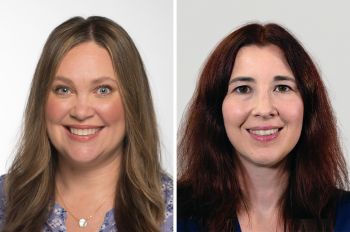Creating an Inclusive Future for Architecture

To Yara Taha (B.ARCH. 5th Year), the future of architecture is not just sustainable—it’s inclusive. In the final years of her Bachelor of Architecture program at Illinois Institute of Technology, that conviction has become a driving force, and she hopes the often overlooked architectures of Africa, Asia, the Middle East, and South America can help inform the environmentally conscious architecture of tomorrow around the world.
“If you study another country’s architecture, you can see how they adapt to their local climate and materials,” says Taha. “For example, if you study the region and people of Saudi Arabia, you understand how they survive harsh summers and desert storms. That could help people consider sustainability wherever they live. [Green building practices] need to be more than just putting solar panels on a roof—they need to consider how a building responds to the climate, how it sits in its site.”
As a student in the College of Architecture, Taha already has helped bring underrepresented architecture into the narrative. In her History of Landscapes course, she worked with her classmates and professor Kris Lucius to rethink the course’s curriculum to make it more inclusive of works from overlooked cultures. International students brought examples of architecture from their home countries and regions to the table, and Taha, who hails from Cairo, relished in the opportunity to share her knowledge of Egyptian architecture.
“Western civilization has had the power to write the narrative, so they deem themselves as the norm and everyone else is the other; no one knows anything about Egypt other than the pyramids,” says Taha.
Following this experience, and in one of her final projects before graduating, Taha researched the representation of different cultures’ architecture in the college’s overall history curriculum. She also provided actionable steps for teaching a more inclusive history with student input.
But that is far from all Taha has done to address the cultural divides that exist in architecture. As an intern at Burhani Design Architects in Chicago during summer 2019, she created a model mosque to explain how the design and architecture of a mosque plays a role in the way Muslims worship; the model is now part of the Morgan Model Collectionat the Chicago Theological Seminary in the Hyde Park neighborhood, which aims to display the unique ways in which different religions worship.
Taha also has been active in the American Institute of Architecture Students and Arab American Association of Engineers and Architects; in the former, she has become a resource for information to fellow Arab students seeking scholarships. And in her studios, she has worked on proposals in which community members were consulted to create more equitable architecture solutions, including a project that redesigned Bronzeville’s Parkman and Overton elementary schools, which were closed by Chicago Public Schools in 2013.
“We had a lot of interviews with people that speak for the community, and it was the first time that I designed something that way. It changed the way I view architecture: we are not the stars here, they are,” says Taha. “In the community engagement experience, we might have the design skills, but the community representatives know what the community needs. Architecture becomes a bridge of communication.”
Community-centric architecture, which brings community input into the design process, is the area in which Taha hopes to practice following graduation. But she sees herself eventually back in academia to teach future students about forms of architecture that need more representation—a mission amplified by her experience in Chicago at Illinois Tech.
“The student body is beautifully diverse here, which can open up a lot of understanding,” says Taha. “So let’s celebrate those differences; let me understand your culture so we can come up with the best design solution. Homogeneity can be comfortable, but diversity can be educational.”




